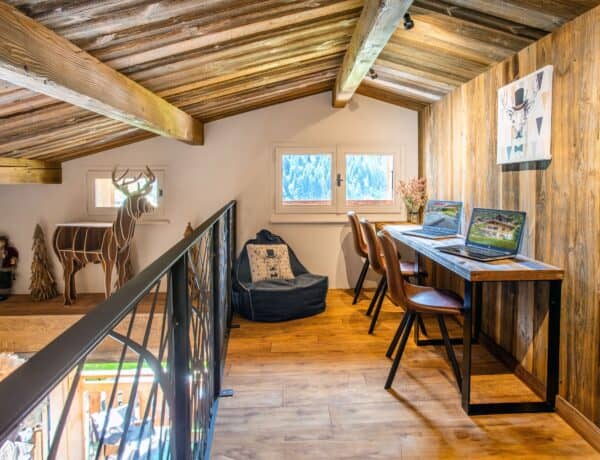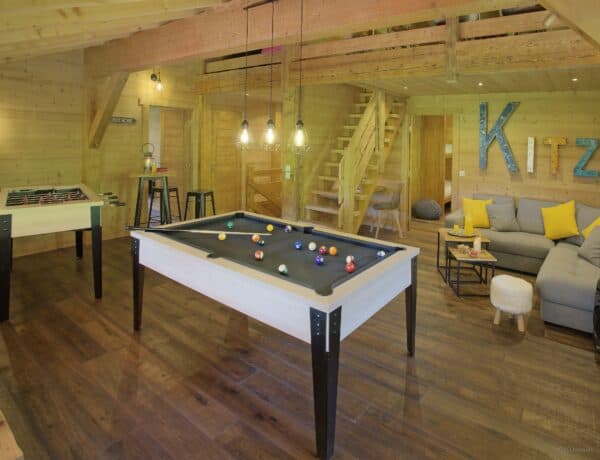If you are considering renting out your chalet, you will inevitably want to estimate the rental income you can expect to generate.
This may seem complex and confusing, especially if you are just starting to think about it. However, it is essential in determining the financial viability of your business.
In this article, we will set out the key factors that determine your chalet’s rental income. Above all, we give you practical, actionable advice to help you make your calculations.
We have sorted these criteria from the more objective and factual (the features of your chalet) to the more subtle and difficult to understand (demand and your rental strategy).
The features of your chalet
When it comes to estimating your rental income, the features of your property are the first thing to consider.
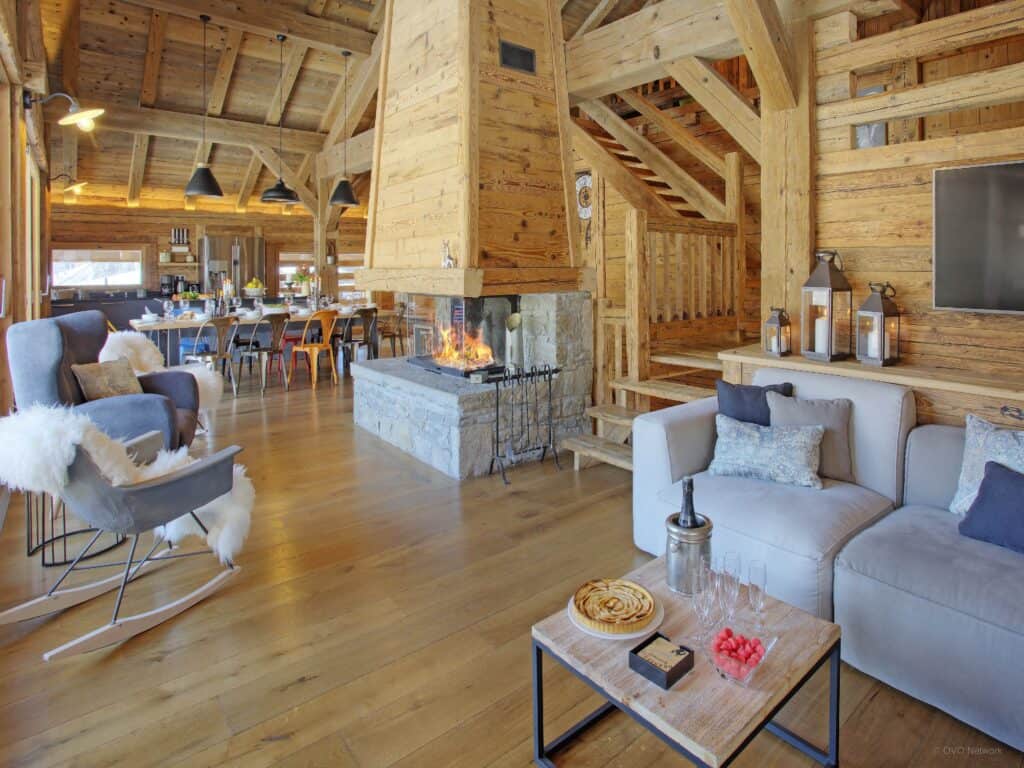
How many guests can you accommodate?
The more guests you can accommodate in your chalet, the more you can increase your rental rates. Large groups are willing to pay more for accommodation that suits their size.
But don’t be tempted to overestimate the capacity of your chalet! You need to take into account the size of your chalet, the number of bedrooms and bathrooms, and local regulations.
Allow for 15m2 per person and always prioritise the guest’s comfort.
Working out your surface area
Measure each room individually, using a standard tape measure or a laser meter. Factors such as ceiling height, room shape and mezzanine floors can affect your final result.
The general rule is to measure the area of each room in your property and add it up.
In the case of an atypical room:
- Start by measuring the overall area of the room
- Subtract the space occupied by walls, pillars, central fireplaces or other obstacles
- Do not include any areas with a ceiling height of less than 1.8m

The number of bedrooms
The bedrooms you offer should be spacious, comfortable and well-decorated, with good-quality furniture and bedding plus plenty of storage.
In addition, it is important to consider the characteristics of your target clientele. A room with bunk beds does not always have the same market value as a room with a king-size bed.
The number of bathrooms
You can include all complete bathrooms with a shower or bath, washbasin and toilet. Shower rooms (with shower and washbasin but no toilet) are not considered a “complete” bathroom. Similarly, rooms with only a toilet and a washbasin are classed as “separate toilets”.
The general rule in the holiday rental market is to have a full bathroom for every two bedrooms, plus an additional shower room.
Ideally, you should have one private bathroom per bedroom. This will help you get closer to the standards of high-end vacation rentals.
The layout and appearance of your chalet
Guests expect your chalet to be well presented, with a high level of comfort and quality. The outdoor facilities that are most attractive to guests vary according to individual tastes and preferences or the region.
The general condition of your property and renovations
Your property should be immaculate, with high-quality finishes and modern facilities.
It is important that your guests can move around your chalet as easily as possible. Small mishaps – a jammed window, a door that bangs, a boiler that needs to be reset before a shower – can damage your chalet’s image.
It’s a good idea to refresh your property’s décor every three to five years. This might include minor updates (new bed linen, cushions and accessories) or more significant changes (replacing furniture or appliances).
Facilities
Holidaymakers are willing to pay a premium for superior facilities such as hot tubs, saunas, swimming pools, gyms, wellness studios and wine cellars. This is especially true if your chalet is located in a highly-competitive area.
However, no matter how impressive the equipment is, it will only add value if it is properly maintained and meets an existing demand.
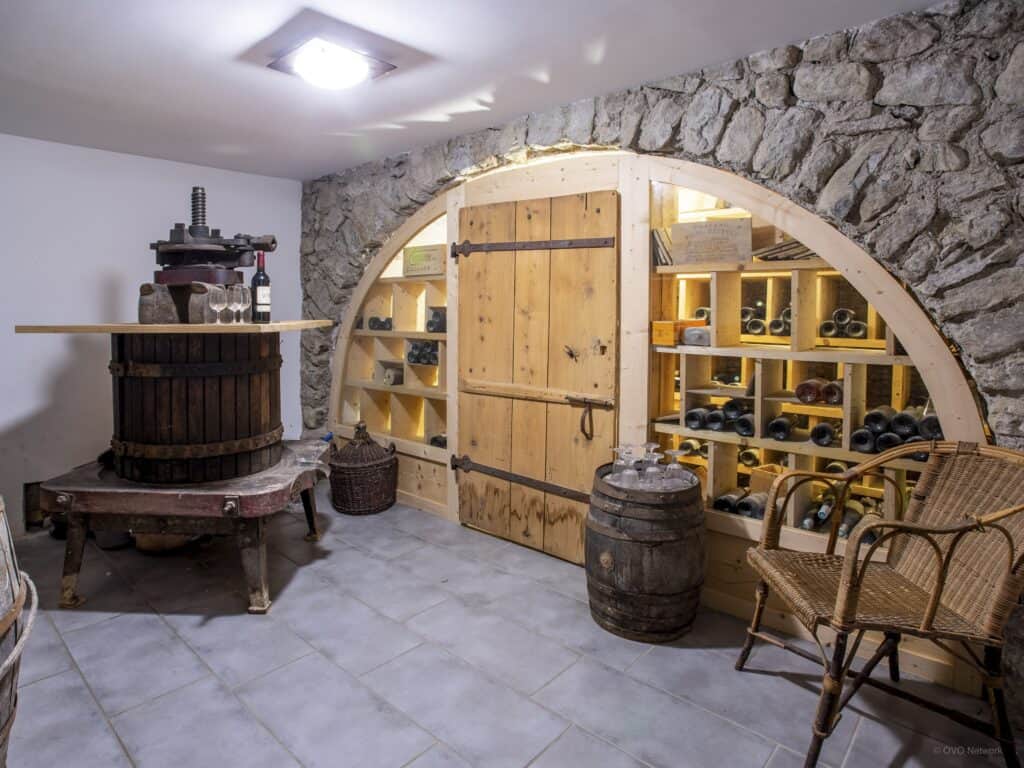
Outdoor areas
Holidaymakers are looking for tastefully-furnished outdoor relaxation areas with an unobstructed view of the mountains or the surrounding countryside.
Apart from aesthetics, think of social gatherings (for example a summer barbecue) and practicality (a trampoline for the children).
Your chalet’s star rating
The star rating defines the level of comfort and quality of your chalet. It ranges from 1 to 5 stars, with 5 stars representing the highest standard.
This certification provides a clear and objective assessment of the comfort level of your chalet, following strict criteria defined by the classification body.
It also helps avoid any confusion between the description of your chalet and the perception of your potential guests.
It is therefore a strong justification for setting your prices higher and attracting a more upmarket clientele.

Seasonality, location and heritage
Owners looking to get the most accurate idea of their future rental income need to think about seasonality and their location when doing their sums.
Seasonality – another factor in your calculations
In the Alps, the high season is generally the period from December to March (the ski season) and the period from July to August (the summer season). You can also include long weekends, school holidays or special events. During these periods, the demand for chalet rentals is higher and prices are higher.
On the other hand, the low season is often in April, May, June, September, October and November, when there are fewer tourists. As a result, you may have to lower your rates during these months: this is something to take into account in your estimate.
To determine the exact periods of high and low season, consult the data provided by the tourist offices and specialised websites.
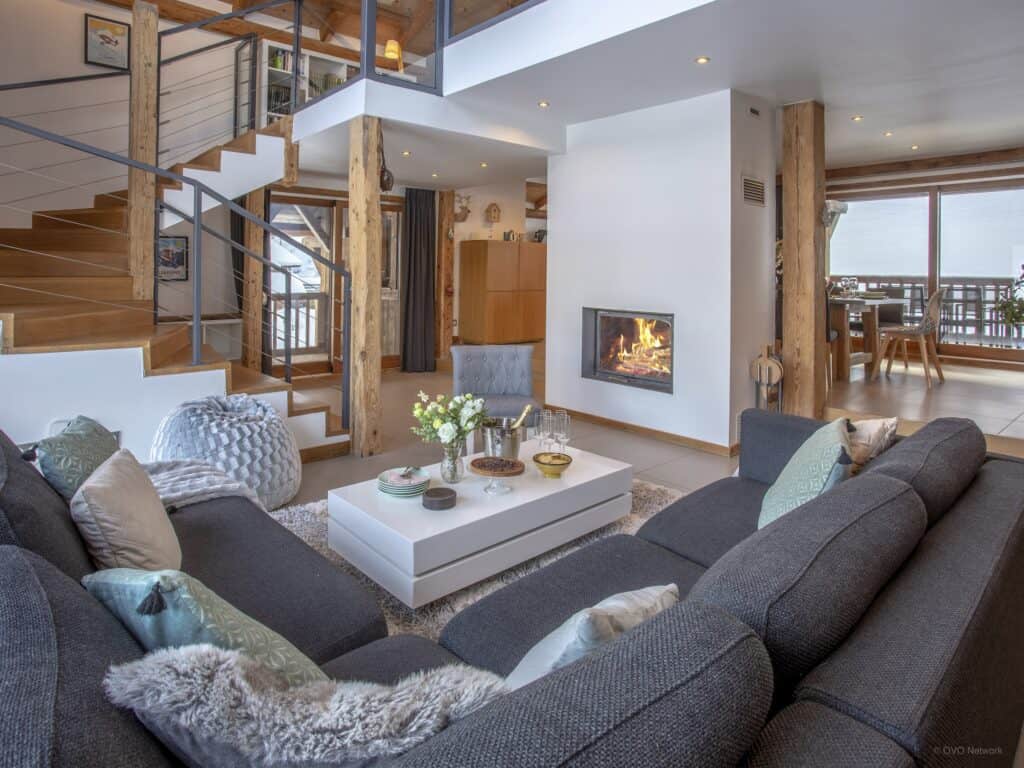
Large ski resorts: a major advantage
In large year-round ski resorts, the difference between high and low season may be less marked than in smaller or seasonal resorts.
The reason for this higher activity is the ability of these resorts to offer a more varied range of alternative activities during the low season, such as hiking, mountain biking, and swimming in lakes or pools. This can attract a wider audience and balance demand throughout the year.
A smaller resort is still an advantage
Proximity to the ski slopes is a major benefit for chalet renters. This also applies to non-winter months, even if the resort in question is fairly small.
Guests are willing to pay more for chalets that are within walking distance of ski slopes, restaurants and shops.
To assess how close your chalet is to resort activities, you can use online tools such as Google Maps and its proximity search function.
Your chalet’s untapped potential
Whatever the location of your chalet, always consider whether you can offer alternative activities to winter sports:
- If your chalet is well located, this will help you to bridge the gap in demand between high and low seasons, as we have seen with chalets located near the big ski slopes.
- If your chalet is less well located, it will help if you diversify your offer and attract a wider range of clients. There are always some members of a group who don’t like to ski and will appreciate the in-house amenities.
Your chalet could be full of promise from a cultural point of view. For example, highlight top-class restaurants, events and museums in the local area.
Being flexible and creative will always work in your favour when it comes to maximising your rental income!

Analyse the market rates
The established competition
In order to obtain accurate figures which allow you to analyse the competition and estimate your income, follow these steps:
First of all, you need to study the rates in your geographical area. You can use holiday rental platforms such as Airbnb, Booking or Vrbo to do this. They allow you to filter search results by location, capacity, facilities, rates and customer reviews.
Define your comparison criteria
Before starting your research, you need to define the criteria that will allow you to compare your chalet with other rental properties. These may include capacity, facilities, location, rental period, etc.
Look at your competitors’ adverts
Once you have identified properties similar to yours, read competitors’ listings carefully. You can list the strengths and weaknesses of each listing, both in terms of content and structure. This will help you understand what tenants are looking for and what features are the most popular.
Read guests reviews on holiday booking websites
This is a great way to get an idea of what guests liked and disliked. You can then adjust your rates according to the quality of your property compared to others.
It’s also the perfect time to learn more about your target audience. Who are they? Families, couples, groups of friends? What are they looking for? You might identify a customer need that is not yet being met in the area and that could benefit you.
Here is an example of a revealing review: guests at Chalet Paralpin were all blown away by the view!
“The hot tub is the icing on the cake!”
The chalet is superb! As are the owner Damien and his family. The views are incredible at sunrise, sunset or just by starlight. The hot tub is the icing on the cake. We loved our stay and enjoyed it. We hope to return soon.
— Sadaf H. Jan 2023
Analyse weekly rates
When looking at competitors’ rates for the period you want to rent your chalet, it is important to be objective. The best way to do this is to cross-check the data with:
- The date the chalet was first rented
- Customer satisfaction (see the previous step)
- Occupancy rate (see next step)
Analyse the occupation rate
Your competitors’ availability calendars will show you the dates their property is available or booked. This data can help you work out the seasonal demand in your area. That makes it easier to estimate your rental income.
Finally, there are other helpful online tools, such as AirDNA, where you can find market data on rates and demand. You can also contact real estate agents and experts in your area, or ask other owners questions via forums or social networks.

Demand can affect your rental income
It is important to know your target audience. If you think you have a tailor-made offer for them, then you can legitimately increase your rental income.
Is your chalet “Cool for Kids”?
Families with young children are an important target group for owners wishing to rent out their chalets.
From the children’s point of view:
- They are as sensitive to the warm and friendly atmosphere as adults are.
- They are just as perceptive to your marketing as older guests. They will ask every year to return to the chalet where there was “the great cabin and trampoline after skiing”.
From the parents’ point of view:
- Children who are happy on holiday and keep themselves busy bring the promise of a real holiday for the adults.
Here again, a “child-friendly chalet” guarantee is not easy to establish. You have to consider the safety of children in the chalet as well as their entertainment.
If your offer is not complete, you won’t be able to justify high prices.
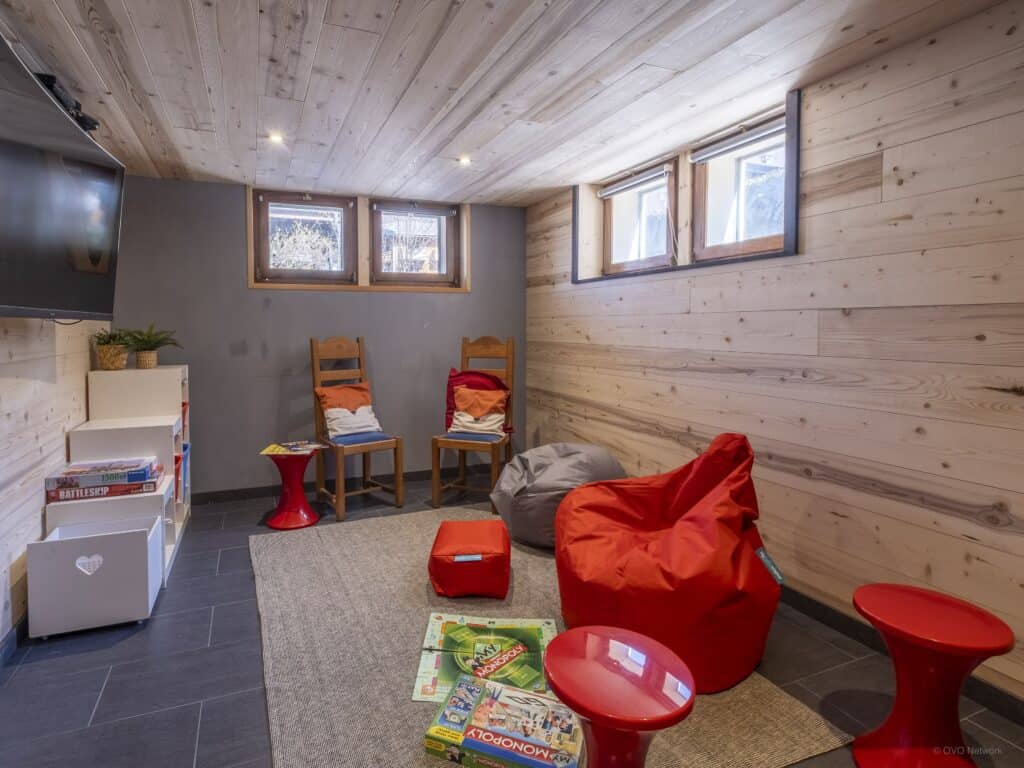
Should you make pets welcome?
More and more people are travelling with their pets.
If you want to welcome them, you need to provide a pleasant environment for both pets and their owners. To do this, you should offer bowls, toys, blankets, litter, and extra towels to wipe their paws. Make sure that no indoor or outdoor plants are toxic to animals and state this in your listing. In addition, your advert descriptions should also be clear about what you will and will not accept.
By offering pet-friendly accommodation, you can stand out from the crowd, increase your rates and thus increase your rental income.
Short stays or weeks only?
Short stays (weekends or long weekends)
Short breaks are suitable for couples looking for a romantic getaway, business travellers or corporate events.
They allow you to charge higher rates per night and greater flexibility in planning bookings. However, they involve more guest changes and therefore more work for the owners. This makes it more difficult to optimise your occupancy rate and can lead to additional turnover costs.
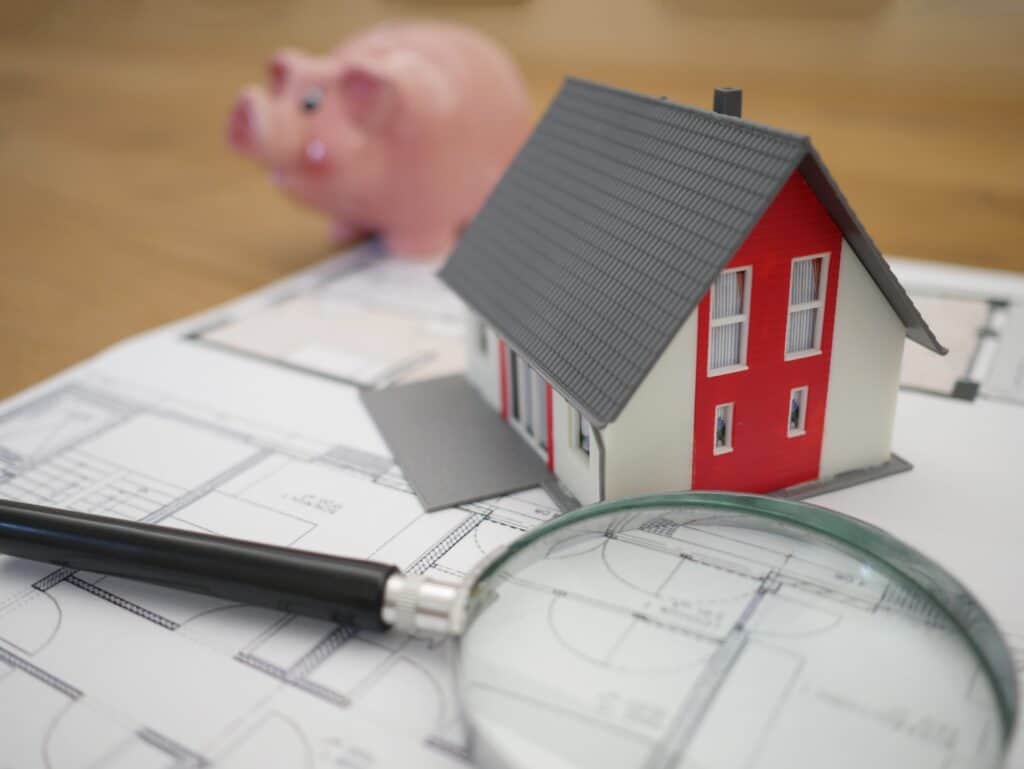
Weekly stays
These can be more attractive for families or groups looking to get together for a holiday.
The rates offered for this type of stay may be lower than for shorter stays. This can be compensated for by longer occupancy and easier management of bookings.
It is also important to consider the seasonality and demand in the area to determine the ideal length of stay. If your chalet is located in a popular ski resort, short stays may be more attractive in the peak season. Weekly stays are better suited to summer stays for outdoor activities.
A whole range of factors should be taken into account to accurately estimate the potential rental income from your chalet. We have listed the most accessible ones so that you can calculate your first figures almost immediately.
However, if you wish to refine your results, you should contact experts in the holiday rental sector. In particular, you can discuss your marketing and pricing strategies with them. These are two other key elements that can impact your rental income.
OVO Network has been a leader in chalet rental management in the French Alps since 2008. And our professional property advisors can help you analyse your position, identify your property’s strengths, forecast your income accurately and maximise your rental income. Arrange a call with them today.
In the meantime, you can estimate your chalet’s profitability potential with our short-term rental income calculator.
Did you enjoy this article? You can learn more about rental investment from these articles:
